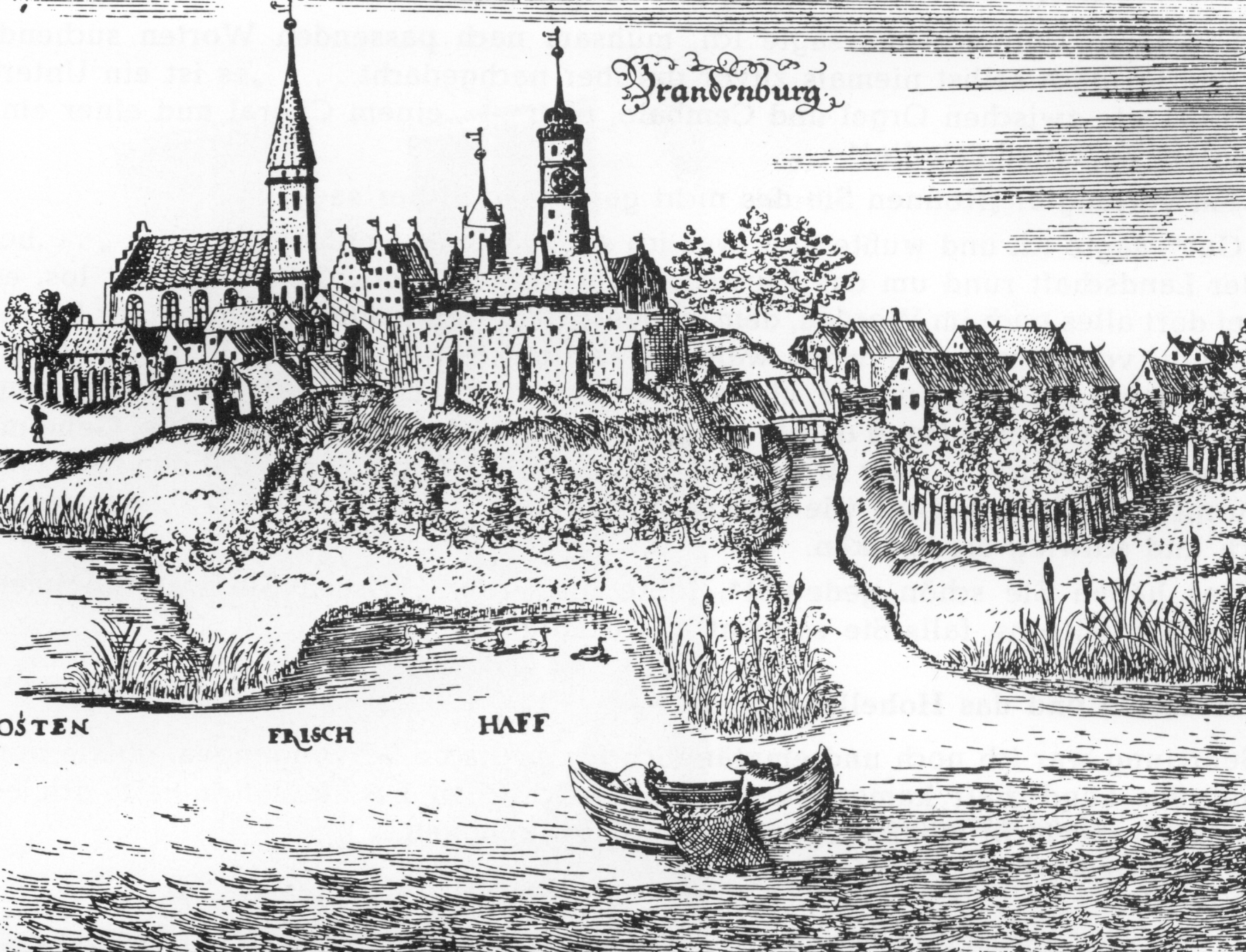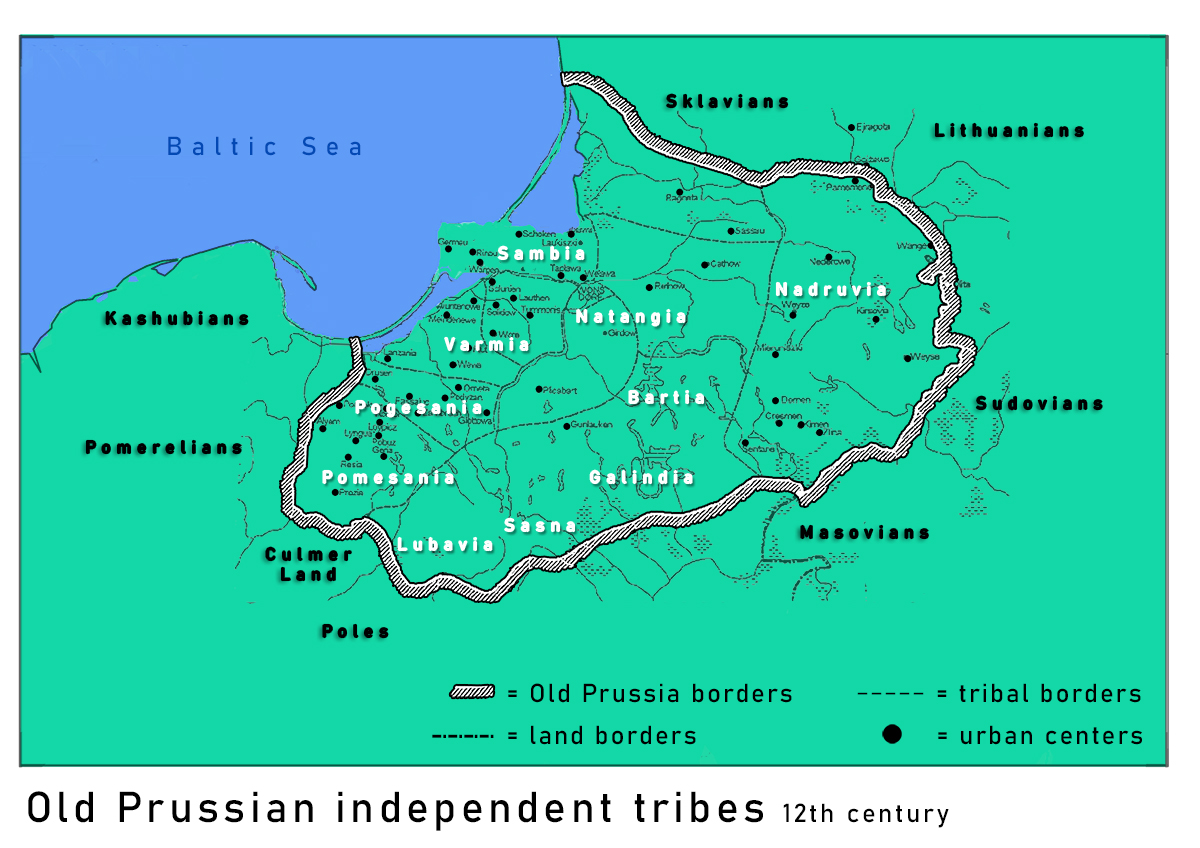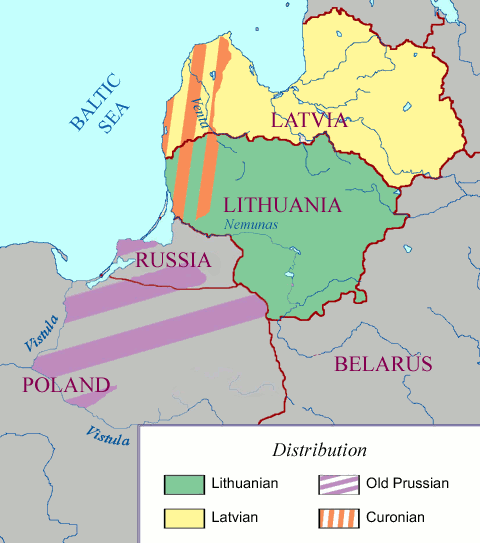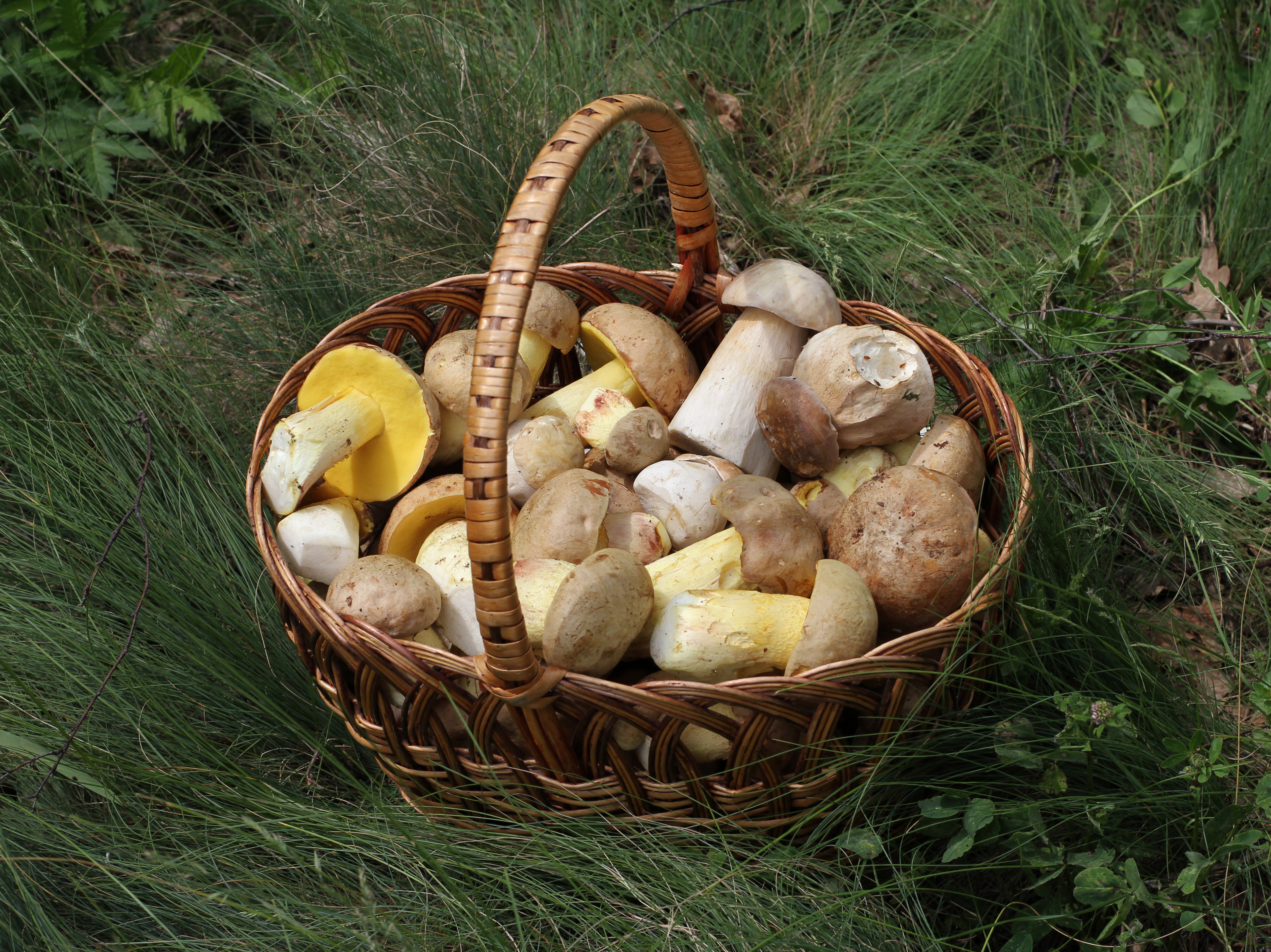|
Lischke (settlement)
Lischke (lisca, liske) was a type of Old Prussian settlement. Lischkes were spontaneously grown settlements in geographically strategic places, so that often they have grown into towns. Often they grew under the protection of castles. The population was mainly innkeepers, craftsmen and merchants.Rolf Siemon: Lischke referring to: *Ludat, Herbert: Vorstufen und Entstehung des Städtewesens in Osteuropa. Köln-Braunsfeld 1955. *Weise, Erich (Hrsg.): Handbuch der historischen Stätten: Ost- und Westpreußen. Stuttgart 1966 (unveränderter Nachdruck).Max Töppen, "Über preußische Lischken, Flecken und Städte: Ein Beitrag zur Geschichte der Gemeindeverfassungen in Preußen", in: ''Altpr. Nachr.'' IV(1867). Etymology The word entered German language during the invasion of |
Georg Heinrich Ferdinand Nesselmann ".Georg Heinrich Ferdinand Nesselmann (February 14, 1811 in Fürstenau, near Tiegenhof, West Prussia (now Kmiecin, within Nowy Dwór Gdański) – January 7, 1881 in Königsberg) was a German orientalist, a philologist with interests in Baltic languages, and a mathematics historian. At the University of Königsberg he studied mathematics under Carl Gustav Jacob Jacobi and Friedrich Julius Richelot, and oriental philology under Peter von Bohlen. In 1837 he received his PhD at Königsberg, where in 1859 he became a full professor of Arabic and Sanskrit. In his book "''Die Sprache der alten Preußen''" (The language of the Old Prussians, 1845), he suggested the term "Baltic languages The Baltic languages are a branch of the Indo-European languages, Indo-European language family spoken natively or as a second language by a population of about 6.5–7.0 million people [...More Info...] [...Related Items...] OR: [Wikipedia] [Google] [Baidu] |
Old Prussians
Old Prussians, Baltic Prussians or simply Prussians were a Balts, Baltic people that inhabited the Prussia (region), region of Prussia, on the southeastern shore of the Baltic Sea between the Vistula Lagoon to the west and the Curonian Lagoon to the east. As Balts, they spoke an Indo-European languages, Indo-European language of the Baltic languages, Baltic branch now known as Old Prussian language, Old Prussian and worshipped pre-Christian Prussian mythology, deities. Their ethnonym was later adopted by predominantly Low German language, Low German-speaking inhabitants of the region. The duchy of the Duchy of Poland (c. 960–1025), Polans under Mieszko I, which was the predecessor of the Kingdom of Poland (1025–1385), Kingdom of Poland, first attempted to conquer and baptize the Baltic tribes during the 10th century, but repeatedly encountered strong resistance. Not until the 13th century were the Old Prussians subjugated and their lands conquered by the State of the Teuton ... [...More Info...] [...Related Items...] OR: [Wikipedia] [Google] [Baidu] |
Teutonic Knights
The Teutonic Order is a Catholic religious institution founded as a military society in Acre, Kingdom of Jerusalem. The Order of Brothers of the German House of Saint Mary in Jerusalem was formed to aid Christians on their pilgrimages to the Holy Land and to establish hospitals. Its members have commonly been known as the Teutonic Knights, having historically served as a crusading military order for supporting Catholic rule in the Holy Land and the Northern Crusades during the Middle Ages, as well as supplying military protection for Catholics in Eastern Europe. Purely religious since 1810, the Teutonic Order still confers limited honorary knighthoods. The Bailiwick of Utrecht of the Teutonic Order, a Protestant chivalric order, is descended from the same medieval military order and also continues to award knighthoods and perform charitable work. Name The name of the Order of Brothers of the German House of Saint Mary in Jerusalem is in and in Latin . Thus the term "T ... [...More Info...] [...Related Items...] OR: [Wikipedia] [Google] [Baidu] |
Old Prussian
Old Prussian is an extinct West Baltic language belonging to the Baltic branch of the Indo-European languages, which was once spoken by the Old Prussians, the Baltic peoples of the Prussian region. The language is called Old Prussian to avoid confusion with the German dialects of Low Prussian and High Prussian and with the adjective ''Prussian'' as it relates to the later German state. Old Prussian began to be written down in the Latin alphabet in about the 13th century, and a small amount of literature in the language survives. In modern times, there has been a revival movement of Old Prussian, and there are families which use Old Prussian as their first language. Classification Old Prussian is an Indo-European language belonging to the Baltic branch. It is considered to be a Western Baltic language. Old Prussian was closely related to the other extinct West Baltic languages, namely Sudovian, West Galindian and possibly Skalvian and Old Curonian. Other linguists con ... [...More Info...] [...Related Items...] OR: [Wikipedia] [Google] [Baidu] |
Baltic Languages
The Baltic languages are a branch of the Indo-European languages, Indo-European language family spoken natively or as a second language by a population of about 6.5–7.0 million people''"Lietuviai Pasaulyje"'' (PDF) (in Lithuanian). Lietuvos statistikos departamentas. Retrieved 5 May 2015. mainly in areas extending east and southeast of the Baltic Sea in Europe. Together with the Slavic languages, they form the Balto-Slavic languages, Balto-Slavic branch of the Indo-European family. Scholars usually regard them as a single Subgrouping, subgroup divided into two branches: West Baltic languages, West Baltic (containing only extinct languages) and East Baltic languages, East Baltic (containing at least two Modern language, living languages, Lithuanian language, Lithuanian, Latvian l ... [...More Info...] [...Related Items...] OR: [Wikipedia] [Google] [Baidu] |
Nest
A nest is a structure built for certain animals to hold Egg (biology), eggs or young. Although nests are most closely associated with birds, members of all classes of vertebrates and some invertebrates construct nests. They may be composed of organic material such as twigs, grass, and leaves, or may be a simple depression in the ground, or a hole in a rock, tree, or building. Human-made materials, such as string, plastic, cloth, or paper, may also be used. Nests can be found in all types of habitat. Nest building is driven by a biological urge known as the nesting instinct in birds and mammals. Generally each species has a distinctive style of nest. Nest complexity is roughly correlated with the level of parental care by adults. Nest building is considered a key adaptive advantage among birds, and they exhibit the most variation in their nests ranging from simple holes in the ground to elaborate communal nests hosting hundreds of individuals. Nests of prairie dogs and severa ... [...More Info...] [...Related Items...] OR: [Wikipedia] [Google] [Baidu] |
Lituanus
''Lituanus'' is an English language quarterly journal dedicated to Lithuanian and Baltic languages, linguistics, political science, arts, history, literature, and related topics. It is published by the non-profit Lituanus Foundation, Inc., and has a worldwide circulation of about 3,000 copies per issue. The first issue was published in 1954 in Chicago, Illinois. Many of the back issues are available free of charge on its website. ''Lituanus'' is abstracted in two internationally recognized abstract services: MLA (Modern Language Association) and IPSA (International Political Science Association). Over the last fifty years, its most frequent editor has been Professor (now Emeritus) Antanas Klimas of the University of Rochester. The journal has featured articles by Czesław Miłosz Czesław Miłosz ( , , ; 30 June 1911 – 14 August 2004) was a Polish Americans, Polish-American poet, prose writer, translator, and diplomat. He primarily wrote his poetry in Polish language, Poli ... [...More Info...] [...Related Items...] OR: [Wikipedia] [Google] [Baidu] |
Basket
A basket is a container that is traditionally constructed from stiff Fiber, fibers, and can be made from a range of materials, including wood splints, Stolon, runners, and cane. While most baskets are made from plant materials, other materials such as horsehair, baleen, or metal wire can be used. Baskets are generally woven by hand. Some baskets are fitted with a lid, while others are left open on top. Uses Baskets serve utilitarian as well as aesthetic purposes. Some baskets are ceremonial, that is religious, in nature. While baskets are usually used for Harvest, harvesting, storage and transport, specialized baskets are used as sieves for a variety of purposes, including cooking, processing seeds or grains, tossing gambling pieces, rattles, fans, fish traps, and laundry basket, laundry. History Prior to the invention of woven baskets, people used Bark (botany), tree bark to make simple containers. These containers could be used to transport gathered food and other items, b ... [...More Info...] [...Related Items...] OR: [Wikipedia] [Google] [Baidu] |
Karl Friedrich Wilhelm Wander
Karl Friedrich Wilhelm Wander (1803 – 1879) was a German pedagogue Pedagogy (), most commonly understood as the approach to teaching, is the theory and practice of learning, and how this process influences, and is influenced by, the social, political, and psychological development of learners. Pedagogy, taken ... and German studies, Germanist. He published the largest existing collection of German-language proverbs. Life Wander was born on 27 December 1803 in Karpniki, Fischbach near Jelenia Góra, Hirschberg in Silesia, as the eldest son of the village tailor of Fischbach. From 1810 he attended the local school there. In 1818 he started a carpentry apprenticeship in Cieplice Śląskie-Zdrój, Warmbrunn, which he dropped after half a year in order to take up his desired profession to become a teacher. He was first trained by the village pastor, then from 1822 to 1824 at the Bolesławiec, Bunzlau teacher's seminary. He later became an auxiliary teacher in Nowogrodziec, Gieß ... [...More Info...] [...Related Items...] OR: [Wikipedia] [Google] [Baidu] |
Posad
A posad ( Russian and ) was a type of settlement in East Slavic lands between the 10th to 15th centuries, it was often surrounded by ramparts and a moat, adjoining a town or a kremlin, but outside of it, or adjoining a monastery. The posad was inhabited by craftsmen and merchants and was its own distinct community, separate from the city it adjoined. Some posads developed into towns, such as Pavlovsky Posad and Sergiev Posad. During the 1920s administrative territorial reform in the Soviet Union, posads were converted into urban-type settlements. History The posad was the center of trade in Ancient Rus. Merchants and craftsmen resided there and sold goods such as pottery, armor, glass and copperware, icons, and clothing; as well as food, wax, and salt. Most large cities were adjoined by a posad, frequently situated below the main citadel and by a river. Posads were sometimes fortified with earthen walls. As posads developed, they became like villages. Membership in the ... [...More Info...] [...Related Items...] OR: [Wikipedia] [Google] [Baidu] |
Types Of Populated Places
Type may refer to: Science and technology Computing * Typing, producing text via a keyboard, typewriter, etc. * Data type, collection of values used for computations. * File type * TYPE (DOS command), a command to display contents of a file. * Type (Unix), a command in POSIX shells that gives information about commands. * Type safety, the extent to which a programming language discourages or prevents type errors. * Type system, defines a programming language's response to data types. Mathematics * Type (model theory) * Type theory, basis for the study of type systems * Arity or type, the number of operands a function takes * Type, any proposition or set in the intuitionistic type theory * Type, of an entire function ** Exponential type Biology * Type (biology), which fixes a scientific name to a taxon * Dog type, categorization by use or function of domestic dogs Lettering * Type is a design concept for lettering used in typography which helped bring about modern te ... [...More Info...] [...Related Items...] OR: [Wikipedia] [Google] [Baidu] |






